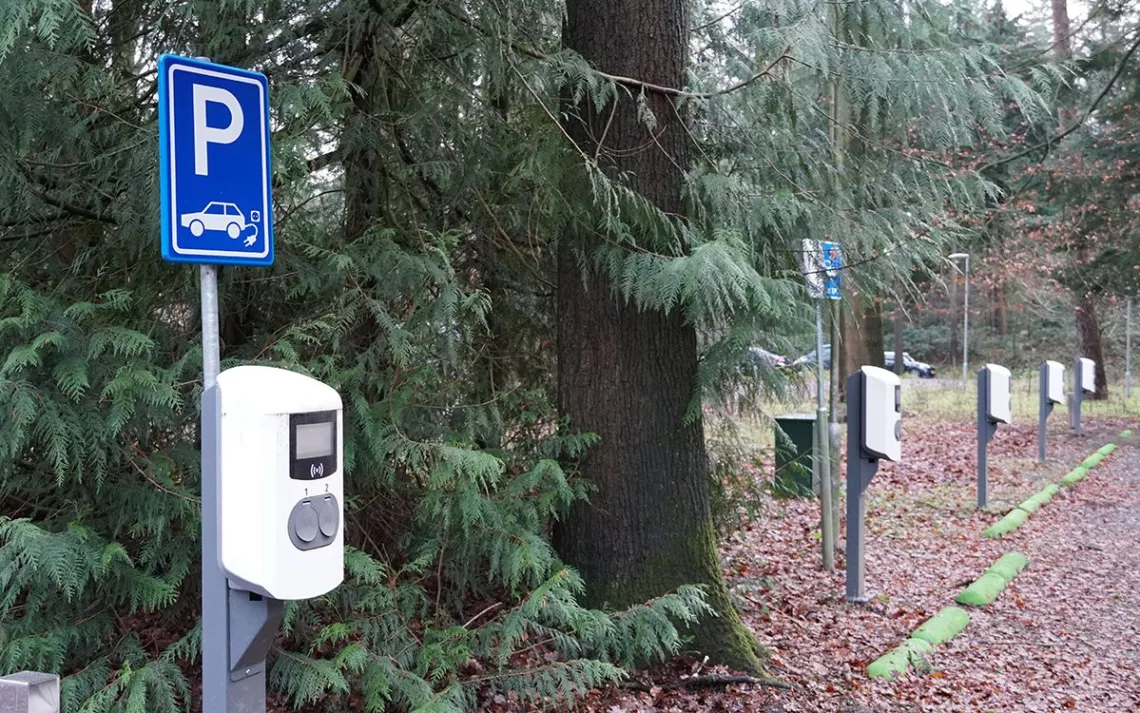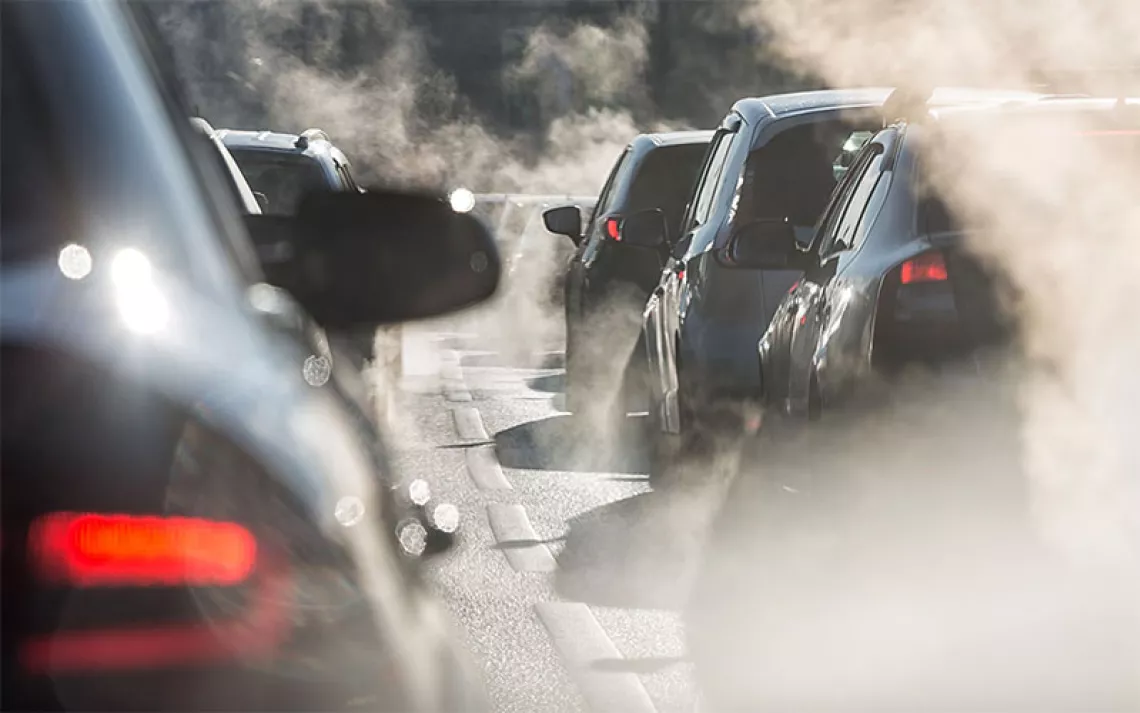Leave Range Anxiety in the Dust
Check out four EV road trips—and our electric vacay-planning tips
It’s no secret that the US loves its road trips, but one of the best parts of this beloved summer pastime—tracing scenic byways through epic landscapes—has been largely off-limits to electric vehicles (EVs). Range anxiety is real, and it’s understandable. After all, the higher the speeds you reach, the more energy EVs tend to consume, and the vast majority don’t yet match (let alone exceed) their EPA ratings. Nonetheless, in a recent Car and Driver test drive of 12 vehicles, all but two made it more than 100 miles, at highway speeds, before needing a charge.
What’s more, with EV ownership on the rise, infrastructure is growing. Eco-conscious drivers will find expanding networks of charging stations, often placed where you’d be stopping anyway and many deliberately placed to open up the country’s network of small towns and wild landscapes. In fact, in an effort to preserve clean air while bringing environmentally minded tourists to rural areas, several states have created tourism initiatives that take the guesswork out of EV road trips. Here are some of our favorites.
Colorado
In early May, Colorado officially designated seven of its historic and scenic roads as "Colorado Electric Byways." To qualify as an electric byway, the route must have DC fast charging stations at least every hundred miles, and within 15 miles of the start and finish of shorter drives. The approved routes wind through the Rockies, trace the Continental Divide, and open up some of the state’s more remote mountain landscapes and communities to EV travel. They range from 40 to 117 miles in length, and some can be linked for a longer trip.
But if you’ve only got time for one, the classic Trail Ridge Road is a must-drive, especially for first-timers to the state. The route connects the towns of Estes Park (just 75 miles northwest of Denver International Airport) and Grand Lake, cutting 48 miles east-to-west through Rocky Mountain National Park. The highest continuous paved road in the US—ascending 4,000 feet to cross the Continental Divide at 12,183 feet—the “Highway to the Sky” is flanked by 12,000-foot peaks, sweeping drop-offs, high-alpine tundra, and ample wildlife, from marmot to elk. As of the publication of this article, charging is available in Estes Park, with additional stations under development in Grand Lake and nearby Granby.
Oregon
As one of the first states to embrace the EV road trip, it’s no surprise that Oregon has its own expansive network of electrified roads, including six themed Oregon Electric Byways with fast charging stations spaced every 25 to 50 miles. There are routes along the sea, through wine country, and more.
The 293-mile North Oregon Coast Electric Byway might be the quintessential Oregon drive. It follows the Columbia River from Portland up to Astoria, then skirts the Pacific south to Lincoln City, where it loops back to Portland via the Willamette Valley. Highlights of the drive include rugged seascapes, iconic Cannon Beach, Victorian neighborhoods, craft breweries, and of course, plenty of wineries. Charging is available in Portland, Scappoose, Westport, Astoria, Cannon Beach, Tillamook, and Lincoln City. A slightly longer option trades the inland wine country leg for a one-way, in-depth tour of the coast, tracing the Pacific from Astoria south to the California border.
Arizona
The Arizona Office of Tourism recently released an electric vehicle guide that includes mileage, temperature, and elevation charts; a list of hotel-based charging stations; state attractions; and a recommended itinerary for visitors coming in from California.
Regardless of how you choose to arrive, a southern Arizona loop traverses some of the most unique and storied landscapes in the country. From Tucson, head to Sierra Vista for some stargazing, artsy Bisbee for mine tours and ghost walks, and Tombstone for a taste of the Wild West. Overnight charging is available at hotels in each town, and you’ll find easy excursions into the cactus-laden Sonoran Desert or forested sky islands.
Vermont
Vermont may be tiny, but it takes EV travel seriously, with the most charging stations per capita in the nation. And thanks to its diminutive size, that means lots of road trip options, including most of the state’s scenic byways.
The Mad River Byway covers 36 miles of scenic Routes 100 and 100B, winding among mountains (including two famous ski resorts), river, and rolling farmlands to connect a series of quaint villages. It’s in these communities—including Moretown, Waitsfield, Warren, and more—where Vermont comes to life with local food, festivals, and historic buildings.
Build Your Trip
Whether you want to connect these routes to a longer itinerary or design something all your own, the first step is to know your vehicle’s range and understand what to expect of the two primary types of public charging stations. Typically found in parking garages and hotel lots, Level 2 AC chargers provide 18 to 28 miles per hour, for a full charge within 8 hours; on the other hand, Level 3 DC Fast Chargers up their output to fill the average EV battery to 80% in just 20 to 40 minutes. Many rapid charging stations are still Tesla-specific, so bringing an adapter will help keep stress levels to a minimum.
Keep in mind, these networks are constantly expanding. For example, while Minnesota has existing electric corridors in populated areas, late last year the state proposed an additional 2,500 miles, much of which covers scenic routes, including multiple roads toward the boundary waters. And Colorado is working toward electrifying all of its 26 scenic byways. Websites like the US Department of Energy’s Alternative Fuels Data Center, ChargeHub, and PlugShare provide up-to-date information and let you map your chosen destinations to ensure there are enough stations to keep you moving. EVTripPlanner has details on expected energy use, such as elevation changes on a route. Hotels, restaurants, and other tourist infrastructure—even in many small communities—are adding charging capabilities to invite guests with an eco-conscious mindset. And, if you don’t (yet) have an EV of your own, they’re increasingly available through rental companies. Just think of it as the ultimate test drive.
 The Magazine of The Sierra Club
The Magazine of The Sierra Club








